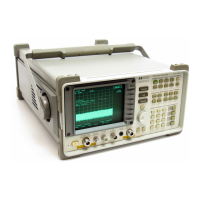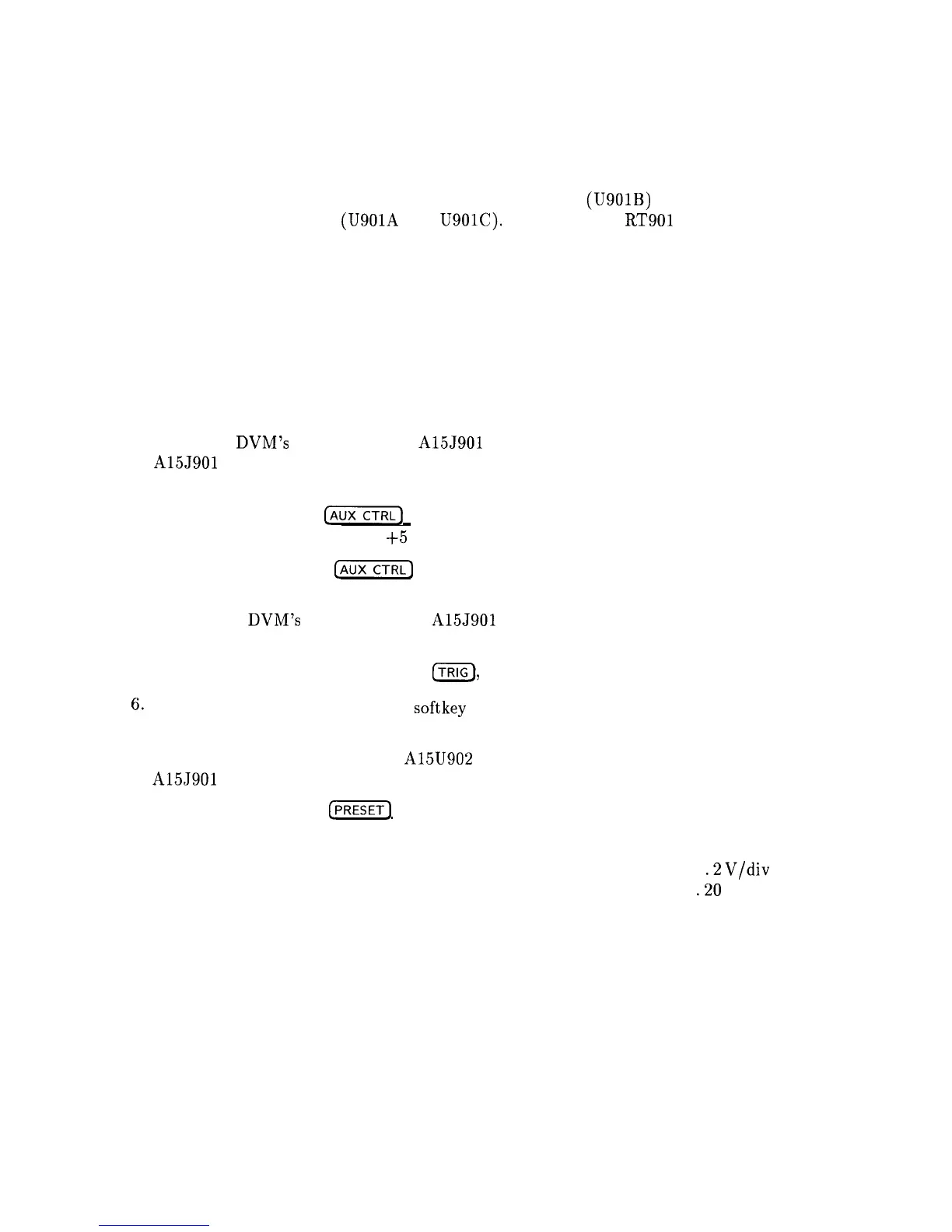Flatness Compensation Control
See Function Block G of Al5 RF Schematic Diagram (Sheet 2 of 4) in the component- level
information binder.
The Flatness Compensation Control consists of a buffer amp (U9OlB) and two identical
voltage-to-current converters (U901A and U9OlC). The thermistor
RT901
in the buffer amp
provides temperature compensation for the PIN diodes in the attenuator stages. The gain of
the Flatness Compensation Amplifiers is driven to a minimum by the REDIR line going low
during Automatic IF Adjustment.
Control Latches
See Function Block H of Al5 RF Schematic Diagram (Sheet 2 of 4) in the component- level
information binder.
The control latches control the PIN Switch Drivers illustrated in Function Block I.
1. Connect a DVM’s positive lead to A15J901 pin 15 (HXMX). Connect the negative lead to
A15J901 pin 6. The measured signal controls the switching between internal and external
IF signals.
2. On the HP 8560A press
(AUX-)
and EXTERNAL MIXER.
should measure approximately
+5
Vdc (TTL high).
The voltage on the DVM
3.
On the HP 8560A press
[m)
and INTERNAL MIXER. The voltage on the DVM
should measure approximately 0 Vdc (TTL low).
4. Connect the DVM’s positive lead to A15J901 pin 13 (LSID). The signal measured turns
on the SIG ID oscillator.
5. On the HP 8560A press SIG ID ON,
ITRIG),
and SINGLE.
6.
Subsequent pushes of the SINGLE softkey should cause the signal measured on the DVM
to toggle between TTL high and low levels.
7. Connect an oscilloscope probe to A15U902 pin 7 (REDIR) and the probe ground lead to
A15J901 pin 6. The signal measured controls the flatness compensation circuit.
8. On the HP 8560A press
cm)
and set the (SPAN) to 1 MHz.
9. Set the oscilloscope for the following settings:
Amplitude Scale . . . . . . . . . . . . . . . . . . . . . . . . . . . . . . . . . . . . . . . . . . . . . . .
.2
V/div
Sweep Time . . . . . . . . . . . . . . . . . . . . . . . . . . . . . . . . . . . . . . . . . . . . . . . . .
.20
ms/div
10. The waveform should be at a TTL high during part of the retrace period and a TTL low
during the sweep (about 50 ms).
SIG ID Oscillator
See Function Block F of Al5 RF Schematic Diagram (Sheet 2 of 4) in the component- level
information binder.
The SIG ID Oscillator provides a shifted third LO (approximately 298 MHz) to distinguish
true signals from false signals (such as image or multiple responses). When the HP 8560A is
set to SIG ID ON, the SIG ID Oscillator turns on during alternate sweeps.
RF Section 11-13

